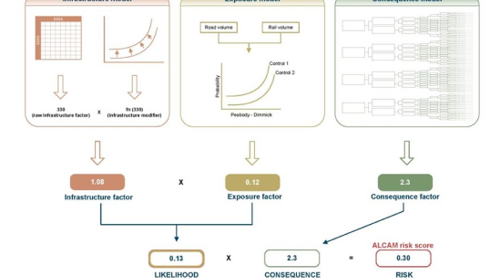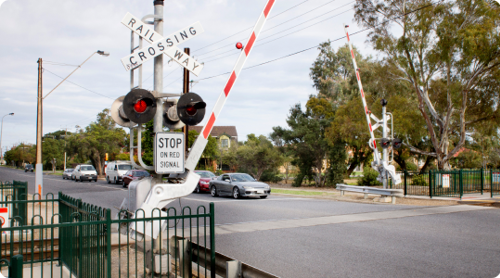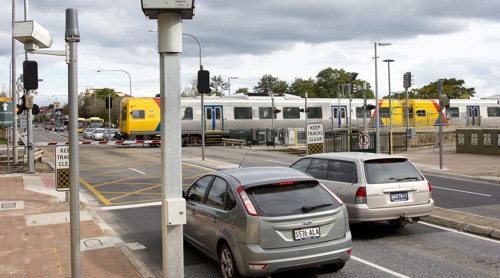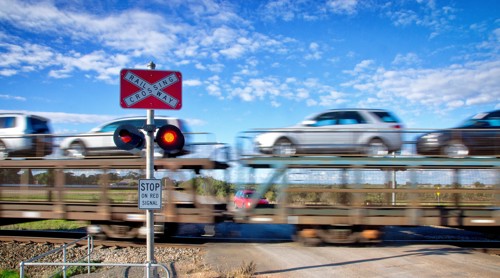
There are two separate models within ALCAM; the Road Model and the Pedestrian model. Each model is comprised of three separate components; Infrastructure, Exposure and Consequence. When combined, these three components produce a unique risk score for each level crossing, that enables the comparison of relative risks across all crossings.
The Infrastructure Factor is the output of a complex scoring algorithm that considers how physical properties at each site will affect human behaviours.
The Exposure Factor is a function of control type, vehicle (or pedestrian) volumes and train volumes.
The Consequence Factor is the expected outcome in the event of a collision and includes deaths and injuries on both the train, vehicle and any adjacent train station platforms.
The ALCAM Risk Score is expressed in terms of an expected number of equivalent fatalities per year.
The ALCAM process involves the collection of data through a combination of level crossing surveys and train and vehicle information from the respective rail and road authorities. Each level crossing is assessed uniformly using a standardised procedure to gather and interpret level crossing data.
ALCAM does not provide warrants for upgrades or attempt to define a ‘safe’ or acceptable level of risk, nor does it determine what treatments should apply or prioritises works.
Those are decisions for each jurisdiction and will depend on the standard of existing crossings, upgrade budgets and the level of risk that they are prepared to accept.


It is also very important to ensure that all stakeholders associated with the particular level crossing are involved with the determination of the final recommended treatment.
Although it is a comprehensive tool for the assessment of level crossing hazards, ALCAM cannot be applied in isolation and does not preclude the need for sound engineering judgement. Any risk assessment and treatment needs to consider other factors, including:
ALCAM is accessible online through a purpose-built data management system; the Level Crossing Management (LXM) System.
The LXM System has been developed by the National ALCAM Committee as an integrated database for level crossings.
It provides the interface for approved stakeholder users to input relevant data and information about level crossings, manage the data collected for ALCAM assessments and calculate the ALCAM risk score. This web-enabled front-end user interface incorporates both the road and pedestrian ALCAM rating models.
